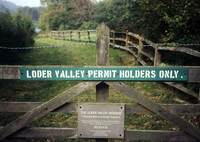Reservoirs can assist in habitat creation.
There is now a widespread public demand for the conservation of native faunas and floras. Many species are well adapted to coexistence with man but others require a degree of protection from human interference which can be provided by reservoirs. In recognition of this fact certain parts of new reservoirs have been set aside as nature reserves. All of them are managed and some have been physically adapted in order to increase their value as wild life habitats. At Rutland Water Sylvia Crowe 'reserved one end of one of the lake's two long "legs" of water as a 142 ha nature reserve, creating a system of bunds and lagoons carefully designed to provide hospitable habitats for a wide range of species' (Aldous & Clouston 1979: 77). The art of habitat creation is of comparatively recent origin but is likely to become highly developed in societies which are concerned about the ecological damage which has been done to the natural environment. Habitat creation may however cause 'wild life reservoirs' to have a greater visual impact than 'conservation reservoirs'. I would welcome this.
Some reservoir developments are opposed by wild life and conservation groups because of the damage which they will do to the environment. Cow Green Reservoir, in Upper Teesdale, inundated part of a unique tundra habitat which once covered large parts of Britain. If such a reservoir must be built then everything possible should be done to create new habitats to compensate for those which are destroyed. This can be achieved by physical manipulation of the reservoir margin to create appropriate soil, water and climatic conditions. The construction of a 'Bakethin' dam will help to produce stable habitats.
In Britain it is normal practice to clear away trees and shrubs before inundation, to reduce the load on waterï¾treatment facilities, and to guard against the possibility of valves being wedged open by waterlogged driftwood. The practice has a bad effect on the establishment of a fish population, aquatic vegetation and marginal vegetation, because it leads to low nutrient levels in the water. To deal with this problem, at West Point Reservoir in Georgia, existing trees were lopped at the lowest planned water level:
Inundated trees and stumps provide many new areas of cover and the flooding of rich bottomland contributes to the fertility of the water body. Conditions are suited for rapid population expansion into the increased living space, new niches and an abundance of food (Stefan 1981: 1419).
This policy might increase the cost of operating a waterï¾supply reservoir but it would improve the appearance of its margins and would increase provision for fishing, which is one of the most popular outdoor sports.

